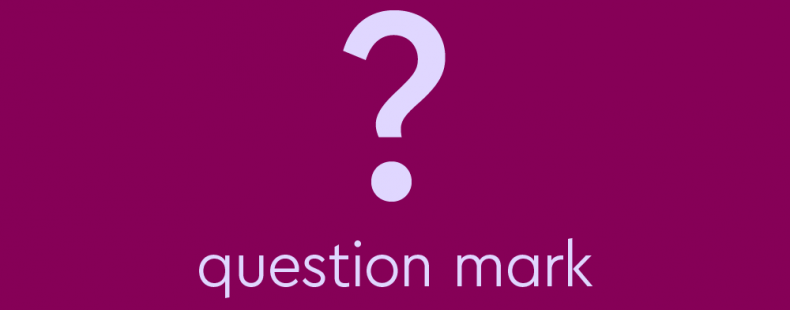What is your name? How old are you? Do you have any pets?
How much wood could a woodchuck chuck if a woodchuck could chuck wood?
Okay, sorry for all of the questions. In everyday life, we often ask and write many questions. When we write a sentence, we use punctuation to signal that what we are saying is a question. Punctuation is the system of symbols and characters we use in writing. Questions get their own special symbol: the question mark. What makes this symbol so special? Do we really use it at the end of every question? Let’s find our answers right now and make sure that question marks don’t leave us scratching our heads.
What is a question mark?
A question mark, also known as an interrogation point or interrogation mark, is a punctuation mark that is used to indicate that a sentence is a question. A question mark resembles a hooked line with a dot underneath (?).
⚡️Examples of a question mark in a sentence
Provided below are examples of question marks used in sentences that ask questions.
- How are you?
- Is the test on Friday?
- She asked me, “Where is the storage closet?”
- The train comes when?
When do you use a question mark?
The question mark has one main job, which is revealed by its name. A question mark is used to indicate that a sentence is a question.
Questions
The question mark is one of three punctuation marks that we use to end sentences. The other two are the period and the exclamation point. If a sentence is a question, you would use a question mark instead of a period or exclamation point:
- Period: She is eight years old. (statement)
- Exclamation point: She is only eight years old! (exclamation)
- Question mark: Is she eight years old? (question)
A sentence is a question if it is directly asking the reader for an answer or more information. This is important to remember because sentences that ask indirect questions typically use a period instead of a question mark. For example,
- Question: Are you hungry? (The reader is directly being asked for an answer)
- Indirect question: Your mother asked if you are hungry. (The reader is being told a question that someone else asked. This sentence is actually a statement.)
Rhetorical questions, which don’t actually expect an answer, also use question marks:
- What does the future hold for us? Nobody can say.
Sometimes, polite requests may end in a period instead of a question mark even if they are asking a question. These polite requests are actually imperative sentences disguised as questions. Imperative sentences use periods and not question marks. For example,
- Could you sign here, please.
- Will the audience sit down now.
How do you feel about open-ended questions? Learn how to identify and use them effectively.
How to use a question mark
There are few things to keep in mind when using a question mark.
Capitalize the first word after a question mark
Typically, a question mark is placed immediately after the last letter of the last word of a sentence. In almost all cases, the word that begins the next sentence is capitalized. For example,
- Can you come to dinner? My kids would love to meet you.
- Have I ever owned a dog? No, I’ve only had cats.
- Should we go into the spooky woods? Is it safe? It doesn’t look like it.
Question marks and other punctuation marks
Period: When ending a sentence, you would use either a period or a question mark and not both. However, if a question ends with an abbreviation, you would place a question mark after the period. For example,
- Who is the CEO of Question Marks, Inc.?
Exclamation point: In formal writing, a sentence will end with either a question mark or an exclamation point and not both. In informal writing, people will often use a question mark and exclamation point (or several) together. For example,
- What happened?!
- WHY!?!?!
Comma: A question mark replaces a comma if used in a quote. For example,
- “Who is in charge?” she asked.
Quotation marks: If a question ends with a quote that is not a question itself, place the question mark outside the quotation marks:
- Who said, “A penny saved is a penny earned”?
Place the question mark inside the quotation marks if the quote itself is a question, but the sentence is not:
- He asked, “What time is it?”
If both the sentence and the quote are questions, the question mark goes inside the quotation marks. You don’t need a second question mark outside of the quotation marks to end the sentence:
- How many times are you going to ask me, “Are we there yet?”
Questions about question marks?
Confused about punctuation? Not sure if you’re using commas, colons, or slashes correctly? Check your writing on Thesaurus.com’s Grammar Coach™. This writing tool uses machine learning technology uniquely designed to catch grammar and spelling errors. Its Synonym Swap will find the best nouns, adjectives, and more to help say what you really mean, guiding you toward clearer, stronger, writing.















